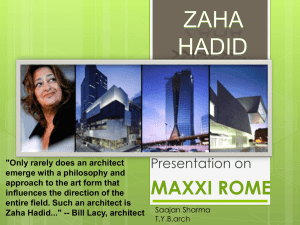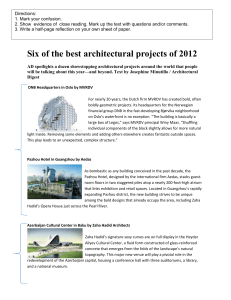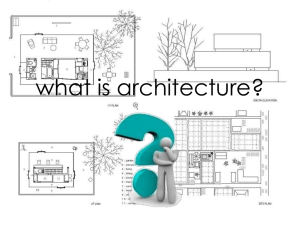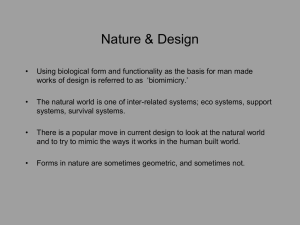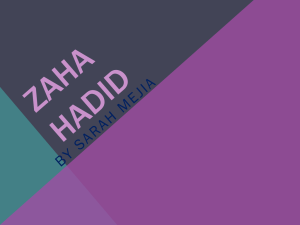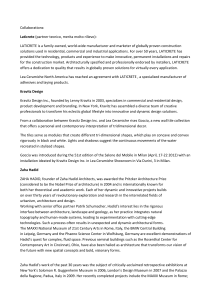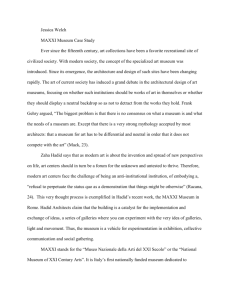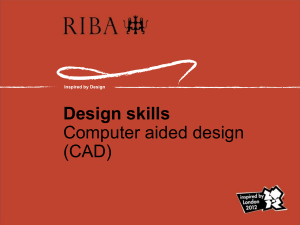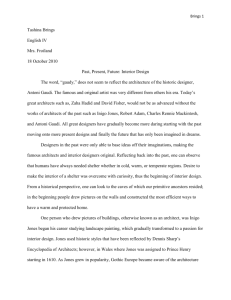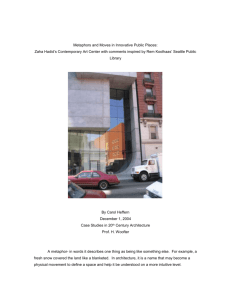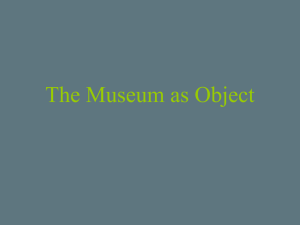- The Archi Blog
advertisement
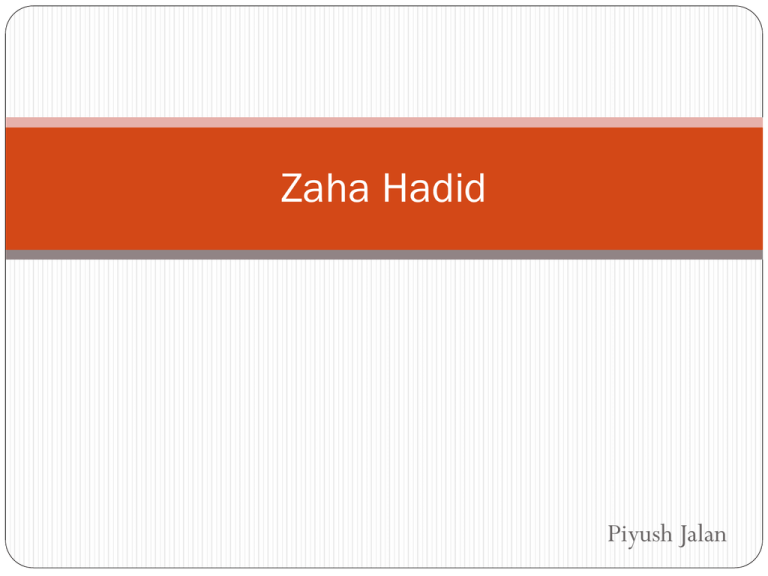
Zaha Hadid Piyush Jalan Biography BIRTH: ZAHA HADID was born in Bagdad (1950). EDUCATION: Trained Maths at the American university of Beirut (1968 - 1971) studied architecture at the architectural association school (AA) in London, UK (1972 - 1977) PRACTISE: Joined OMA (office of metropolitan architecture) and became a partner (1977).Own practice 'ZAHA HADID office' (from 1980). Childhood Zaha Hadid was raised in a liberal, open-minded family which allowed her to explore new ways of doing things and think critically. She was born in Baghdad, Iraq in 1950 to aristocratic parents. Hadid's father played an important role in her creative development. He exposed her to many different cultures while always stressing the importance of her heritage. He demonstrated this through his studies at the London School of Economics and participation in the fight for Iraqi independence from foreign occupation. His progressive views on the industrialization of Iraq, housing issues, and the nationalization of the oil production influenced Zaha in her views of the world. Hadid’s childhood experiences encouraged a belief in open communication between different groups of people, but also a strong conviction in Iraqi independence. EDUCATION Hadid's elementary education in England and Switzerland exposed her to many different cultures. She attended school with Christian, Jewish, Muslim, and Islamic girls. This is the first indication of marginality in her life. She felt distanced from her Muslim heritage at the school because of its Christian educational style. "I NEVER HAD A TRADITIONAL EDUCATION AS A MUSLIM. IN THE ARAB WORLD, ISLAMIC CULTURE AND ARAB CULTURE ARE THE SAME. IT'S A CULTURAL SITUATION, NOT A RELIGIOUS SITUATION." (HADID 1995) This dissension between Arab and Western influences reoccurred as she developed her architectural style. Hadid first became interested in architecture at age eleven, although she pursued other interests before attending architecture school. A friend of the family was designing a home for Hadid's aunt and would bring the models by and show Zaha. Her mother and father increased her interest by taking her to architectural exhibitions. Before pursuing higher education in architecture, Hadid studied mathematics at the American University in Beirut in 1968. The field of modern mathematics and the relationship between philosophy, physics and math interested her briefly before studied architecture. (Hadid 1995) CONCEPT "GRAVITY-DEFYING", "FRAGMENTARY" "REVOLUTIONARY" A MAIN THEME OF HADID'S DESIGNS EXHIBITS THAT A BUILDING CAN FLOAT AND DEFY GRAVITY. MAXXI, ROME MAXXI stands for ‘Museo nazionale delle arti del XXI secolo’ (National Museum of 21st Century Art). The museum will become the joint home of the MAXXI Arts and MAXXI Architecture and Italy’s first national museum solely dedicated to contemporary arts. Zaha Hadid architects, out of 273 candidates, won the architectural competition to design the building in 1998 with a design that responds to the form and arrangement of existing industrial buildings on the site. The program offers a flexible, interdisciplinary arena for the exhibition of contemporary art and architecture and for live events. MAXII, ROME It acts as a tie between the geometrical elements already present It is built on the site of old army barracks between the river tiber and via guido reni, the centre is made up of spaces that flow freely and unexpectedly between interior and exterior, where walls twist to become floors or ceilings. The building absorbs the landscape structures, dynamizes them and gives them back to the urban environment. Hadid's architecture can thus be understood as an intensification of the surrounding space. 'a scene for thought, with art as a player on the cene' says hadid. Zaha Hadid Zaha Hadid stated: "I see the MAXXI as an immersive urban environment for the exchange of ideas, feeding the cultural vitality of the city. It's no longer just a museum, but an urban cultural centre where a dense texture of interior and exterior spaces have been intertwined and superimposed over one another. It's an intriguing mixture of galleries, irrigating a large urban field with linear display surfaces". The architecture of MAXXI Two principle architectural elements characterize the project: the concrete walls that define the exhibition galleries and determine the interweaving of volumes; and the transparent roof that modulates natural light. The roofing system complies with the highest standards required for museums and is composed of integrated frames and louvers with devices for filtering sunlight, artificial light and environmental control. Galleries, Walkway and Materials Located around a large full height space which gives access to the galleries dedicated to permanent collections and temporary exhibitions, the auditorium, reception services, cafeteria and bookshop. Outside, a pedestrian walkway follows the outline of the building, restoring an urban link that has been blocked for almost a century by the former military barracks in Rome. Materials such as glass (roof), steel (stairs) and cement (walls) give the exhibition spaces a neutral appearance, whilst mobile panels enable curatorial flexibility and variety. Sinuous shape The fluid and sinuous shapes, the variety and interweaving of spaces and the modulated use of natural light lead to a spatial and functional framework of great complexity, offering constantly changing and unexpected views from within the building and outdoor spaces. PROJECT NUMBERS Total site area: 29,000 m2 / Exterior spaces: 19,640 m2 / Interior spaces: 21,200 m2 / Display space: 10.000 m2 / Services (auditorium, library-video library, cafeteria, restaurant, etc.): 6,000 m2 / MAXXI Arts: 4.077 m2 / MAXXI Architecture: 1,935 m2 / Total volume: 113,000 m3 / Maximum height: 22.90 m / Demolitions of existing structures: 100,000 m3 / Structural steel: 6,000,000 kg / Steel roof trusses: 700,000 kg / Site poured structural concrete: 50,000 m3 / Formwork area: 40,000 m2 of which 20,000 m2 exposed / Area of glass skylights: 2,600 m2 / Number of people employed by the MAXXI: an average of 100 people per day (technicians and labourers) for 1,500 days / Hours of construction time: 1,250,000 / Project cost: 150 million Euro / Visitor forecast: between 200 and 400 thousand per year.
